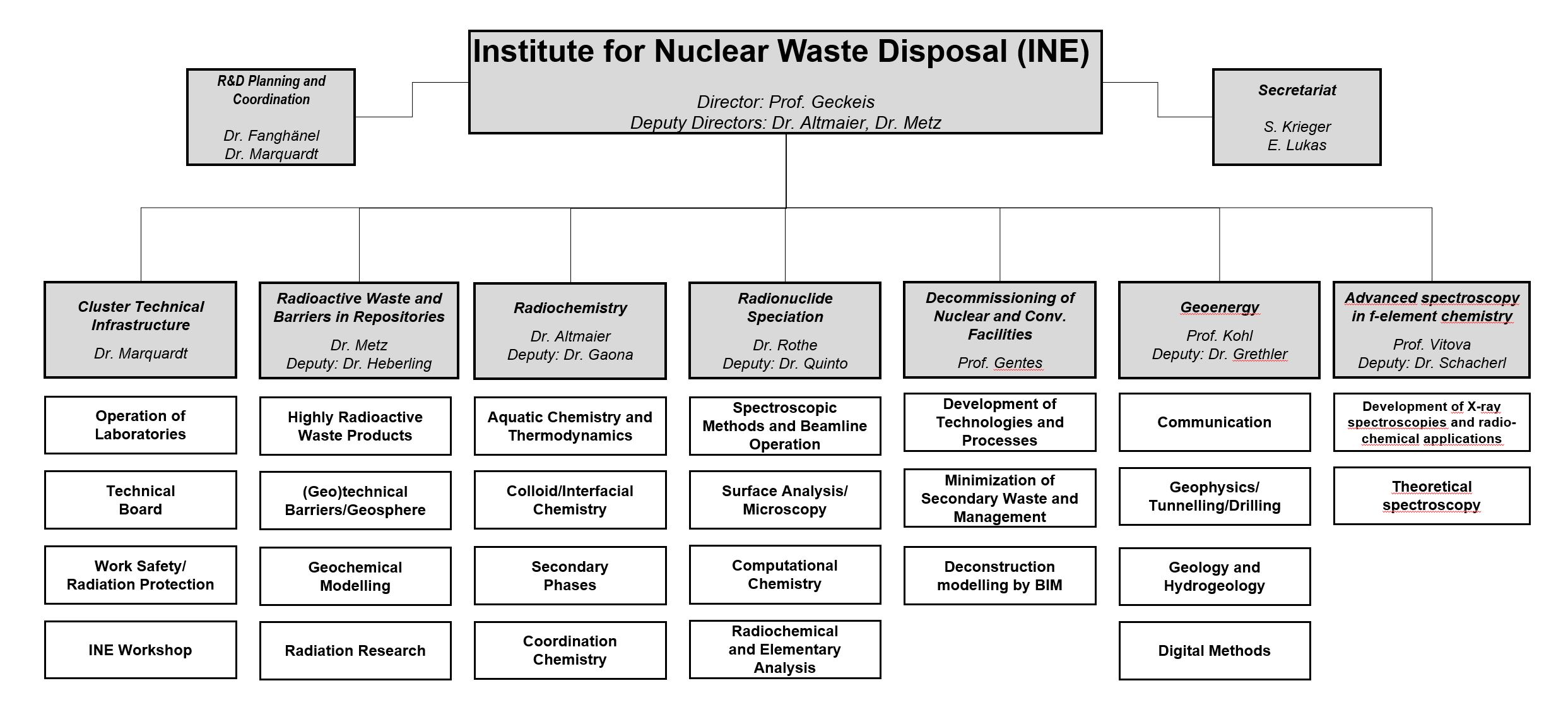Profile and mission of INE

The final report of the German commission for the disposal of high-level radioactive waste in 2016 and the repository site selection act of 2017 (Standortauswahlgesetz) pave the way for the disposal of radioactive waste produced by nuclear energy in Germany. The demand of a science based and transparent procedure to select a repository site providing an ultimate level of safety over a time period of 1 Mio. years represents an unique and fascinating challenge. After the shutdown of the last nuclear power plant in Germany in 2022, research for the safe disposal of radioactive and notably high-level nuclear waste and the safe decommissioning of nuclear facilities will be still required for decades.
In Germany the disposal of high-level nuclear wastes falls in the responsibility of the Federal Government. Research and development at the Institute for Nuclear Waste Disposal (INE) at KIT are conducted as an integral part of the national preventive research in the frame of the HGF research program NUSAFE (Nuclear waste management, safety and radiation research). At the same time, research at INE is embedded into the KIT energy center R&D topic nuclear energy and safety.
With about 100 employees KIT-INE is the largest institute inside the Helmholtz Association of German research centers covering research for various aspects of nuclear waste disposal and nuclear waste management. INE develops and operates unique radiochemical and analytical infrastructures for the handling and characterization of radionuclide materials – including high-level nuclear waste forms like spent reactor fuel.
 |
